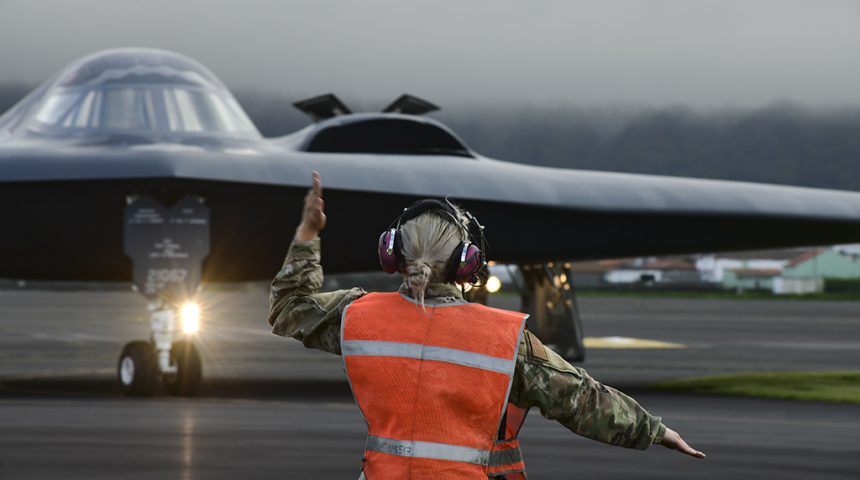Three U.S. Air Force B-2 Spirit bombers have arrived at Lajes Field, Azores. From there, the stealth strategic bombers launched a mission to the Arctic, joining the B-1 already in theater.
Three U.S. Air Force B-2 Spirit stealth bombers belonging to the 509th Bomb Wing, from Whiteman Air Force Base, Missouri, arrived at Lajes Field, Azores (Portugal), on Mar. 16, 2021. The three bombers (TIGER11/82-1067, TIGER12/88-0328 and TIGER13/89-0129) conducted a hot-pit refuel and a crew swap with engines running before departing again to continue the mission in the Arctic region.
Interestingly, after launching from Lajes, two B-2s headed towards northern Europe and integrated with two U.S. B-1B Lancers from the 7th Bomb Wing, Dyess Air Force Base, Texas, deployed to Orland Air Force Station, Norway, for Bomber Task Force Europe 21-1, during a mission off the coast of Iceland.
“Bomber Task Force missions are critical to maintaining our global competitive edge,” said Lt. Gen. Stephen Basham, U.S. Air Forces in Europe-Air Forces Africa deputy commander, in a public release. “The importance of providing Airmen the opportunity to train in unique environments can’t be overstated.”
The integration of the two U.S. bombers in High North, is unusual, even though both the B-1s and B-2s have operated in the region in the past. However the joint mission is remarkable because it shows a growing pivot to the strategic Arctic theather, the “battlefield” for an intensifying struggle between the U.S. and other “Western” Arctic states and Russia, for military as well as economic reasons (mostly related to energy extraction and maritime shipping activities). The presence of four strategic bombers not far from the Barents Sea, dubbed “Russia’s Naval Backyard“, is probably going to increase tension in the area, already at a high level after the first ever deployment on Norwegian soil of four U.S. Air Force B-1 bombers. As to the type of mission profile flown by the the U.S. bombers during the training mission on Mar. 16, 2021, there’s a wide variety of possibilities, from a routine sortie to train with the C2 (Command and Control) agencies and restriction in the region, to far more complex stuff (as, just for example, flying a simulated combined attack on the Russian Navy Northern Fleet).
As a side note, the BTF mission off Iceland was once again supported by 100th Air Refueling Wing’s KC-135s from RAF Mildenhall, UK, that could be tracked online:
✈️USAF 🇺🇸
3x KC-135
58-0036 QID837
62-3540 QID838
61-0315 QID839
Going to provide AAR support for the 3 B-2’s that arrived at Lajes today. B-2 serials are 82-1067, 88-0328 & 89-0129. pic.twitter.com/NVKdWNxdwc
— Intel Air & Sea (@air_intel) March 16, 2021
Whatever, the BTF 21-1 deployment continues to expand with lots of interesting activities carried out around Scandinavia. For instance, on Mar. 8, 2021, a B-1B Lancer bomber of the U.S. Air Force landed for the first time at Bodø Main Air Station in northern Norway. The first landing of a BONE (from “B-One”) at an airbase above the Artic Circle was conducted during a training mission, dubbed Agile Condor, thatinvolved Close Air Support training alongside U.S. Special Operations Forces members, supporting the training of Norwegian and Swedish Joint Terminal Attack Controllers (JTAC) and integration with four Swedish JAS-39 Gripen fighter aircraft.









